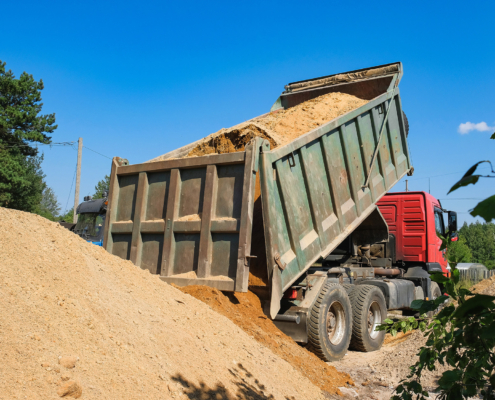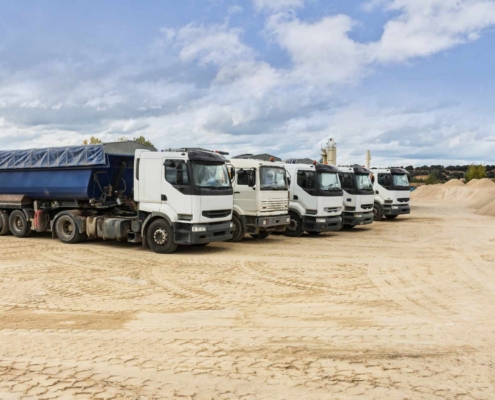 https://pontotocsandandstone.com/wp-content/uploads/2025/08/How-Supply-Chain-Disruptions-Impact-Frac-Sand-Availability-and-Pricing.jpg
1250
2000
AbstraktMarketing
/wp-content/uploads/2021/08/Pontotoc-White-Logo.png
AbstraktMarketing2025-08-21 20:34:102025-08-26 16:14:43How Supply Chain Disruptions Impact Frac Sand Pricing and Availability
https://pontotocsandandstone.com/wp-content/uploads/2025/08/How-Supply-Chain-Disruptions-Impact-Frac-Sand-Availability-and-Pricing.jpg
1250
2000
AbstraktMarketing
/wp-content/uploads/2021/08/Pontotoc-White-Logo.png
AbstraktMarketing2025-08-21 20:34:102025-08-26 16:14:43How Supply Chain Disruptions Impact Frac Sand Pricing and AvailabilityThe Complete Guide To Frac Sand Sizes for Your Operation
Oil and gas operations rely on frac sand to help extract resources from the ground, but what frac sand sizes are available? This article dives into the different types of frac sand, the reasons for having various mesh sizes, and the applications that use each type. We also look at frac sand specifications, which can be helpful when choosing the right one for a job. Read on to learn more about frac sand sizes and their respective uses in oil and gas operations.
What Are the Different Frac Sand Sizes?
Choosing the right size is one of the most important considerations when working with frac sand. There are a few different material sizes, including 40/70 mesh, 40/80 mesh, and 100 mesh. The higher the number, the smaller the particles of sand will be. For example, 40/70 mesh frac sand contains particles between 0.25mm to 0.6mm in diameter, while 40/80 mesh has particles ranging from 0.2mm to 0.5mm in diameter. The 100 mesh size is even finer, with particles ranging from 0.15mm to 0.4mm in size for optimal filtration and other uses.
Why Are There Different Sand Mesh Sizes?
Various sizes of frac sand allow oil and gas operations to use them for different purposes and applications as needed. For instance, larger particles are better suited for plugging off spaces in wellbores. In comparison, smaller particles can create an effective seal against fluids entering a formation or reservoir during hydraulic fracturing operations. Finer grades of sand provide more efficient fluid flow and improve overall productivity by reducing friction losses within the wellbore system during pumping operations.
How Is Frac Sand Used?
Frac sand sizes are typically used for a variety of applications, including:
- Plugging off fractures or open spaces in wellbores during completion operations.
- Creating pathways through which fluids can enter a formation or reservoir during production operations.
- Increasing access to hydrocarbons trapped in low-permeability rock formations by propping open and stimulating fractures, allowing oil and gas movement into wells.
A specific grain size is recommended for each application to provide an effective solution for its respective purpose. Grain size does not compromise safety due to flow or particle blockage of flow channels within the system due to movement over time.
Frac Sand Specifications
To ensure the best possible performance, frac sand must meet specific specifications:
Size and Shape
Sand grains must be uniform in size and shape to ensure optimal packing and permeability. The ideal size for frac sand is between 0.1 and 0.8 millimeters, although some operators may use slightly larger or smaller sizes depending on the fracked formation. The shape of the sand grains should be angular, rather than rounded, to provide better interlocking and prevent settling.
Crush Resistance
Crush resistance is typically measured using the K-value or crush resistance test. The higher the K-value, the more crush-resistant the sand is. Frac sand with a K-value of 8,000 psi or higher is considered high-quality and is preferred by most operators.
Acid Solubility
Acid solubility measures sand that dissolves when exposed to hydrochloric acid, which is used in some fracking operations. The lower the acid solubility, the better the sand will perform. Most frac sand should have an acid solubility of less than 2%.
40/70 Sand Size
Sand suppliers with plentiful reserves can deliver top-notch 40/70 proppant sand. This type of proppant has a high roundness and sphericity rating of 0.7 or more, plus unbeatable benefits like low acid solubility, high silica content, and resistance up to 10,000 psi.
40/70 Size Differentiations
The size of the granules is what separates 40/70 material from 100 mesh sand. Heavier particles in a 40/70 blend alter how the aggregate responds when placed in intense conditions and high-pressure scenarios.
Companies like Pontotoc boast a 40/70 frac sand material with high silica content, impressive roundness, and sphericity values of 0.7 or higher, resulting in a durable proppant that can withstand the toughest pressures and closures. Pontotoc also offers 40/80 and 100 mesh products that can be tailored to meet your specific needs with our advanced analysis capabilities.
If you’re looking for specific frac sand sizes, be sure to check out this article on selecting the right industrial material provider. With a supplier like Pontotoc, you have an array of options when it comes to sand.
40/80 Sand Size
The 40/80 mesh proppant has all the bells and whistles for hydraulic fracturing operations. It passes strict American Petroleum Institute standards for acid solubility and crush strength, meaning less dust and fines, and top-notch resistance to closures up to 10,000 psi. Its high silica composition gives it a superior ability to fight crushing pressure, while its exceptional roundness and cracking point ensure everything stays in place.
100 Sand Size
The 100 mesh silica proppant is only sourced from the finest sandstone deposits. This particular grade of proppant is incredibly sought-after, and companies like Pontotoc offer it in every order of finer-grain products.
This material is incredibly resilient and highly conductive, with a spherical shape that helps reduce the creation of dust-like particles. Even under the immense pressure of up to 14,000 pounds per square inch, it maintains its strength and durability.
Pontotoc Sand & Stone: Your Source for the Highest-Quality Grade of Sand
Understanding different types of frac sand sizes and their respective applications is key in ensuring that oil and gas operations are running smoothly and safely without compromising safety or productivity levels. From 40/70 mesh up through 100 mesh variations, these refined grains are critical components found within many operational procedures associated with hydraulic fracturing processes today, so choose wisely! Contact the experts at Pontotoc Sand & Stone today to get started.
Related Postings
 https://pontotocsandandstone.com/wp-content/uploads/2025/08/How-Supply-Chain-Disruptions-Impact-Frac-Sand-Availability-and-Pricing.jpg
1250
2000
AbstraktMarketing
/wp-content/uploads/2021/08/Pontotoc-White-Logo.png
AbstraktMarketing2025-08-21 20:34:102025-08-26 16:14:43How Supply Chain Disruptions Impact Frac Sand Pricing and Availability
https://pontotocsandandstone.com/wp-content/uploads/2025/08/How-Supply-Chain-Disruptions-Impact-Frac-Sand-Availability-and-Pricing.jpg
1250
2000
AbstraktMarketing
/wp-content/uploads/2021/08/Pontotoc-White-Logo.png
AbstraktMarketing2025-08-21 20:34:102025-08-26 16:14:43How Supply Chain Disruptions Impact Frac Sand Pricing and Availability https://pontotocsandandstone.com/wp-content/uploads/2025/08/large-quary-for-frac-sand-mining.jpg
1250
2000
AbstraktMarketing
/wp-content/uploads/2021/08/Pontotoc-White-Logo.png
AbstraktMarketing2025-08-14 19:56:332025-08-26 16:14:43Understanding the Health and Environmental Impacts of Frac Sand Mining
https://pontotocsandandstone.com/wp-content/uploads/2025/08/large-quary-for-frac-sand-mining.jpg
1250
2000
AbstraktMarketing
/wp-content/uploads/2021/08/Pontotoc-White-Logo.png
AbstraktMarketing2025-08-14 19:56:332025-08-26 16:14:43Understanding the Health and Environmental Impacts of Frac Sand Mining https://pontotocsandandstone.com/wp-content/uploads/2025/08/Industrial-trucks-loading-frac-sand.jpg
1250
2000
AbstraktMarketing
/wp-content/uploads/2021/08/Pontotoc-White-Logo.png
AbstraktMarketing2025-08-14 19:43:452025-08-26 16:14:43Innovations in Frac Sand Logistics: Enhancing Efficiency and Sustainability
https://pontotocsandandstone.com/wp-content/uploads/2025/08/Industrial-trucks-loading-frac-sand.jpg
1250
2000
AbstraktMarketing
/wp-content/uploads/2021/08/Pontotoc-White-Logo.png
AbstraktMarketing2025-08-14 19:43:452025-08-26 16:14:43Innovations in Frac Sand Logistics: Enhancing Efficiency and Sustainability